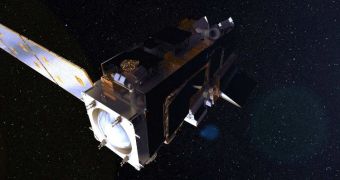NASA representatives announce the successful conclusion of the final round of negotiations on the contracts for the Joint Polar Satellite System-1 (JPSS-1) satellite. The next-generation spacecraft will be operated by the US National Oceanic and Atmospheric Administration (NOAA).
JPSS-1 will be the second advanced satellite to be deployed for NOAA, following the successful launch of the Suomi National Polar-orbiting Partnership (Suomi NPP) satellite, on October 28, 2012.
The recently-concluded round of negotiations dealt with the contracts required to assemble the science instruments and the satellite platform for the new mission. JPSS-1 is currently scheduled to launch no earlier than 2017.
One of its primary purposes is to ensure the continuity of weather and environmental observations, taking over this responsibility from Suomi NPP. The latter was originally a pathfinder for the now-canceled National Polar-orbiting Operational Environmental Satellite System (NPOESS).
NASA announces that the final contract, covering JPSS-1's Visible Infrared Imager Radiometer Suite (VIIRS) instrument, was signed between the agency and Segundo, California-based Raytheon Space and Airborne Systems, on June 19.
Northrop Grumman Electronic Systems was selected in April to construct the Advanced Technology Microwave Sounder (ATMS) instrument, while Ball Aerospace was chosen back in 2011 to build the Ozone Mapping and Profiler Suite (OMPS) instrument and the actual spacecraft.
The JPSS Ground System was completed by Raytheon Intelligence and Information Systems last year, as was the Crosstrack Infrared Sounder (CrIS) instrument, developed and tested by ITT Exelis.
Using these advanced instruments, the JPSS-1 spacecraft will be able to create numerical weather prediction models that will enable meteorologists to extend the maximum range of accurate predictions beyond three days.
The satellite will also be able to measure several properties of the planet's atmosphere, clouds, radiation budget, clear-air land and water surfaces, and sea surface temperature, all of which will contribute to estimating future weather patterns.
“The instrument contracts include work to build the instruments for the JPSS-1 mission while also providing support services for units previously launched on the Suomi NPP mission in October 2011,” NASA experts say in a statement.

 14 DAY TRIAL //
14 DAY TRIAL //